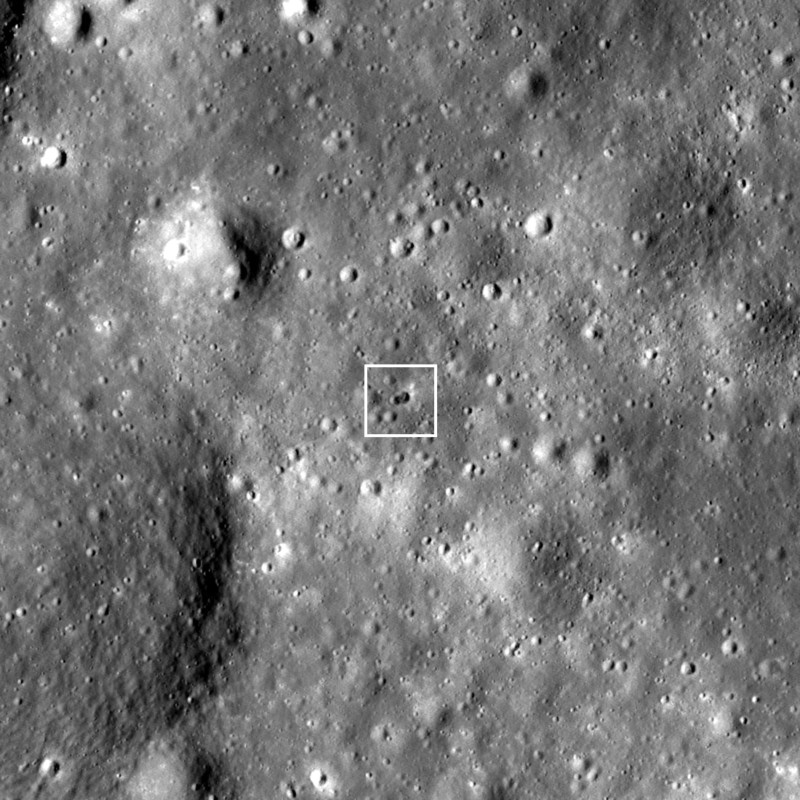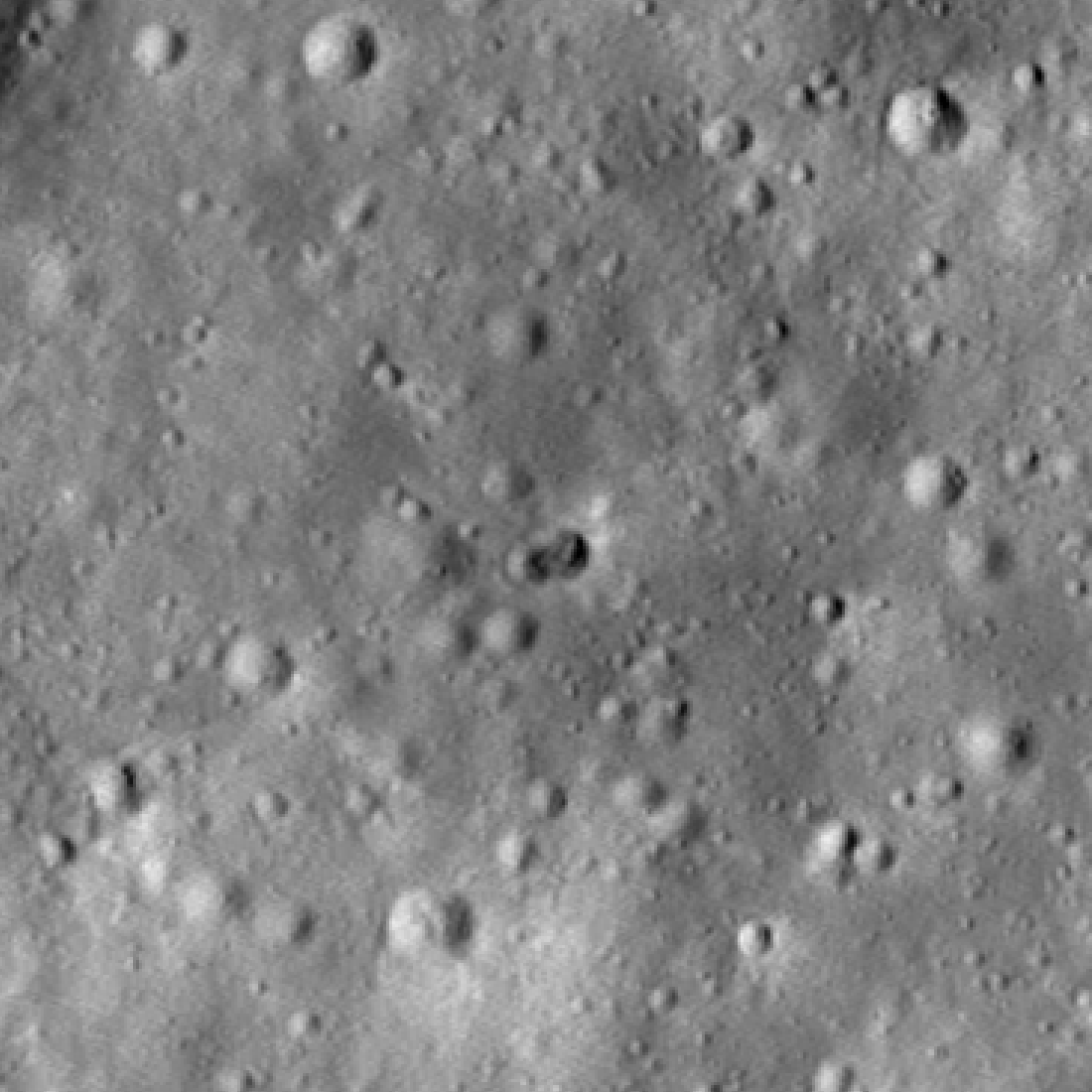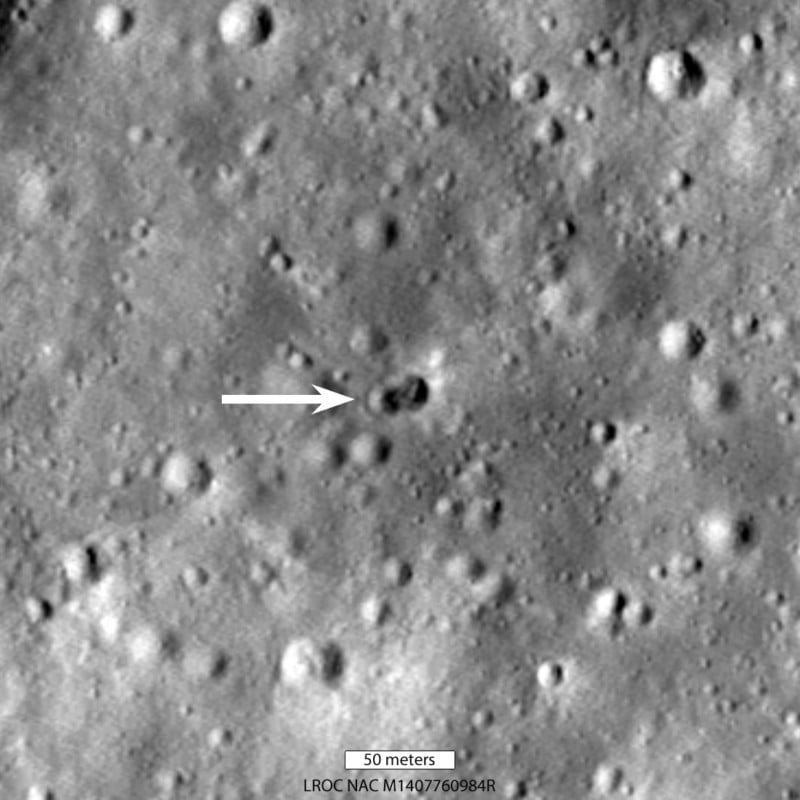NASA’s Lunar Orbiter Spots Site of Mysterious Rocket Impact

NASA’s lunar reconnaissance orbiter has photographed the site of a rocket impact that occurred last March. Not only has it created a strange double crater, it is also not clear where the rocket even came from.
Astronomers discovered the rocket heading towards the moon on a collision course last year, but the impact didn’t take place until March 4. The impact site has been photographed by the NASA lunar reconnaissance orbiter and, surprisingly, the crater is actually two craters: an eastern crater (18-meter diameter, about 19.5 yards) superimposed on a western crater (16-meter diameter, about 17.5 yards).

NASA says the existence of the double-crater is unexpected and may indicate that the rocket body had a large mass at each end.
“Typically a spent rocket has mass concentrated at the motor end; the rest of the rocket stage mainly consists of an empty fuel tank. Since the origin of the rocket body remains uncertain, the double nature of the crater may indicate its identity,” the space agency writes.

NASA has not provided any guesses as to what the additional mass was that would have created the two craters. Chron reports that at least 47 NASA rocket bodies have created craters, or spacecraft impacts, on the Moon, with the four largest being attributed to the Apollo 13, 14, 15, and 17 missions.

It should be noted that no other rocket body impacts on the moon have created double craters though. NASA says that the four Apollo SIV-B craters had a “somewhat irregular” outline and were substantially larger (greater than 35 meters, or about 38 yards) than each of the double craters.
According to the photos, the maximum width of the double crater is about 29 meters, or about 31.7 yards and the mystery rocket body was near that of the S-IVBs.

No country or organization has yet claimed responsibility for or ownership of the rocket.
Image credits: NASA/Goddard/Arizona State University